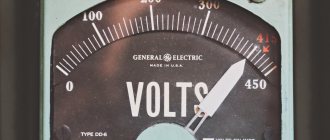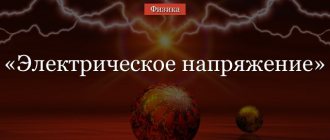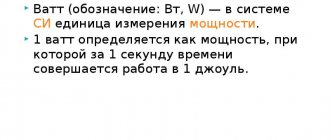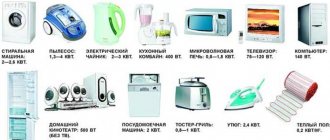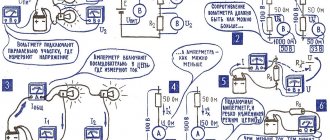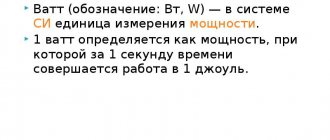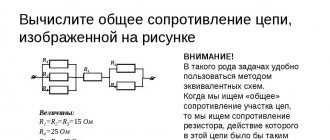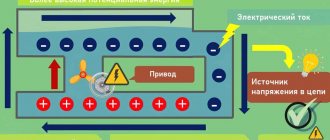Based on data on electricity consumption, they solve household and professional problems. The unit of power is Watt. Studying the information presented below will help you correctly compare the efficiency and functional parameters of different models of equipment, and create reliable lines for connecting power supplies. This information will be useful at the selection stage and during the operation of the equipment.
To measure power consumption, special equipment is used
History of appearance
How many watts are in a kilowatt
For many millennia, humanity has used horse-drawn vehicles to perform heavy work tasks. At the end of the 19th century, for example, public transport in the United States operated on the basis of this traditional technology. The total length of railways for the corresponding purpose was approximately 8.9 thousand km.
It was during this time period that new energy sources began to be actively introduced: steam and electric machines. At the same time, a need arose for more accurate power measurement. A new unit of power was defined within the framework of a scientific congress (Great Britain, 1882). After this, for a long time an alternative designation was used - horsepower (hp). It was only in 1960 that the Watt (watt) was officially approved along with other SI units as an international standard. Watt abbreviation – W.
Symbols of Junia[ | ]
| Notation in Junie.[4] | ||
| Symbol | Name | Junia number |
| ㎺ | Picowatt (Square PW) | U+33BA |
| ㎻ | Nanowatt (Square NW) | U+33BB |
| ㎼ | Microwatt (Square Mu W) | U+33BC |
| ㎽ | Milliwatt (Square MW) | U+33BD |
| ㎾ | Kilowatt (Square KW) | U+33BE |
| ㎿ | Megawatt (Square MW MEGA) | U+33BF |
Who came up with the idea of using watts?
Current unit
A specific name was given to this unit of measurement after the name of the Scottish inventor D. Watt. It was he who first proposed the use of a standardized amount of power - horsepower. This approach became the basis for standardizing this most important parameter, the main assessment of the energy potential of power units.
Drawing of the steam engine improved by James Watt
For your information. One horsepower is equivalent to the power required to lift a 75 kg object to a height of 1 meter per second (≈734 W).
How many zeros are there in a giga?
Prefixes for multiples
| Decimal multiplier | Console | Designation |
| Russian | Russian | |
| 109 | giga | G |
| 1012 | tera | T |
| 1015 | peta | P |
Interesting materials:
Which is correct for years or years? How to write my years and my wealth correctly? How to correctly write Years have passed or Years have passed? How to make a to-do list for the year? How to install CS GO correctly on Steam? How to make a wish for the New Year 2022? How to make a wish for the New Year? How do you celebrate your 3rd wedding anniversary? How to join a game of CS GO with a friend? How to extend free Avast for a year?
Power formula
Illuminance unit
By basic definition, from the horsepower example discussed above, the principle of calculating energy consumption is clear. Power ( P ) can be measured in terms of work (A) done in a certain time interval ( t ) as follows:
P=A/t.
Inverse proportionality emphasizes the relative increase in energy expenditure to quickly perform a specific action.
F applied to the object and the speed of movement ( V ):
P = F * V.
The direct dependence of power on the two components from the second part of the formula is clear without detailed explanation. If the speed is expressed in terms of the distance traveled (D) in a certain time (V = D/t), after a simple mathematical transformation we can obtain the following result:
P = (F * D)/t.
Formula for the relationship between power, voltage and current
To derive dependencies between the parameters under consideration, you can return to the definition with work. In this case, the movement of charge (Q) over a given distance is considered. When moving from point F1 to F2, work (A) will be performed equal to the change in potential or voltage. The basic formula is easy to transform:
P=A/t = (U/t)*Q.
The current strength is determined by the amount of charge that moves during the control time (I = Q/t). After combining the marked dependencies, the following result will be obtained:
P = U * I.
“Related” parameters have been removed from this expression. Typical electrical quantities are left. If we add the well-known formula of Ohm's law, we can establish working relationships for calculations taking into account electrical resistance:
P = U2/ R = I2 * R.
Basic formulas for calculation
For your information. The presented dependencies allow you to obtain accurate calculation results when working with a direct current source. However, in a standard household network, single-phase 220 V power is used. The signal amplitude changes with a normalized frequency of 50 Hz, so it is necessary to take into account the peculiarities of energy consumption by different types of loads.
If a classic incandescent lamp or a boiler with a heating element is connected to heat water, it is permissible to use the formulas discussed above. However, the simple technology is not suitable when dealing with load reactance. Inductive and capacitive components form an oscillating circuit. The process of accumulation and exchange of energy with the power source is activated. During such cycles, part of the power is wasted, so for an accurate assessment the active component is isolated:
Pact = U * I * cos ϕ.
The additional multiplier in the formula characterizes the losses in a certain load. The cos ϕ value is indicated on the nameplates of electric motors, in the accompanying documentation for machines, transformers, and generators.
Experts advise not to forget about “useless” reactive power (Preact = U * I * sin ϕ). The passage of current through a circuit in any direction increases the energy potential of the molecular lattice of the conductor. This process is accompanied by heating. If you exclude this component from the calculations, the risk of breakdowns and emergency situations increases. The total power watt can be calculated using the formula:
Ptotal = √((Pact)2 + (Preact)2).
Special equipment is used to check operating circuits, repair and configure. You can measure power with a wattmeter. For constant online monitoring, such a unit can be installed in the electrical panel. Products in this category are equipped with indications. Some models are capable of transmitting information over a local network and via the Internet.
In the mobile version, the wattmeter is used to clarify the electricity consumption of devices connected to the outlet
Instead of specialized equipment, you can use a standard universal multimeter. To measure current, the device is connected to an electrical circuit in series with the load. Parallel connection will help you find out the voltage. Next, using the formulas presented above, calculate how much power watts a TV or other equipment consumes.
What is tension? Volt [V]
Voltage is a physical quantity that characterizes the ratio of the work of the electric field in the process of transferring a charge from one point A to another point B to the value of this same charge. Simply put, it is the potential difference between two points. Measured in Volts.
The voltage is essentially similar to the amount of water pressure in the pipe; the higher it is, the faster the water flows from the tap. The voltage is standardized and the same for all apartments, houses and garages, equal to 220 Volts with single-phase power supply. Also allowed according to GOST is a 10 percent deviation for the home electrical network. The voltage must be no less than 198 and no more than 242 Volts.
1 Volt contains:
- 1,000,000 microvolts
- 1,000 millivolts
Sub-unit W
Having found out what is measured in watts, you can move on to the nuances that are important for practice. In some situations, the base units are too large to estimate performance parameters. Thus, some sensors (heat, light) consume a minimum of electricity. The power of a suitable power supply can be determined after performing the calculation. For convenience, instead of 1 watt, fractional values are used:
- 10-3 – mW, milliwatt;
- 10-6 – µW, microwatt;
- 10-9 – nvt, nanowatt.
Zeptowatts (10-21) and other smallest units have no practical significance in everyday life. These values are used in theoretical calculations of various physical processes.
conclusions
In order to have an idea of what power and current are, you will need to study the parameters that relate to the concepts of physics. Volt and Watt are units that allow you to measure force and power in an electrical flow. To better understand the characteristics of physical processes, it is recommended to pay attention to the fact that these two values cannot be equated. In this case, power is the rate at which a device powered by electrical current consumes incoming and continuously moving energy. A simple example to understand the process: a light bulb can provide illumination. Its intensity can be adjusted from dim to very bright and even blinding. The power and intensity in this case will depend on the speed at which the light bulb consumes energy. If the brightness is required higher, then the electricity consumption will be higher. To save consumption, you should slow down the flow of energy - make the light flux dim. The power indicator applies to all electrical appliances that are used in production or in domestic conditions. Power is not always directly related to electricity. This is the main difference between Volt and Watt indicators.
Multiple units of W
The basic value (1 W) is too small for assessing household needs. For a clear example, you can study the operation of a modern washing machine. The total power of the equipment is determined by the operating parameters:
- an electric motor that rotates the drum;
- heating element (heating element);
- pump for forced drainage of liquid;
- control and monitoring unit.
The following factors influence actual energy consumption:
- working temperature;
- duration and other features of individual modes;
- rotational speed;
- loading volume.
The information provided demonstrates the impossibility of obtaining correct results using measurements. For the convenience of buyers, energy efficiency standards have been established at the selection stage. Modern models are marked with the Latin letter “A” with the addition of “pluses”. The higher the final designation, the lower the bill for consumed electricity will be.
Using the accompanying documentation, you can clarify the parameters officially indicated by the manufacturer. An example of a modern model for energy consumption (Samsung WF60):
- class – A+++;
- for one standard operating cycle –860 W;
- per year - 175,000 W.
To simplify the assessment of such consumers, it is convenient to use the designation kilowatt - 103 (watt, kW). By applying this dimension, you can get the following result instead of the data given in the previous list:
- per cycle consumption will be 0.86 kW;
- per year - 175 kW.
From this example it is clear that the watt designation is suitable for power levels from 0.1 to 999.
In distribution and transmission networks, as well as in production processes, they operate with significantly larger quantities. The watt unit of measurement is not appropriate. To perform calculations, a multiple of 106 is used (megawatt abbreviation MW). The capital "M" is used to avoid confusion with mW. This addition, if necessary, will indicate a fraction of a watt (0.03 W = 30 mW).
Notes
- Energy when climbing stairs comes from mgh
.
Setting m
= 100 kg,
g
= 9.8 m/s2 and
hour
= 3 m gives 2940 J. Dividing this by the time taken (5 s) gives a power of 588 W. - The average household electricity consumption is 1.19 kW in the US and 0.53 kW in the UK. In India it is 0.13 kW (urban) and 0.03 kW (rural) - calculated based on GJ data reported by Nakagami, Murakoshi and Iwafune.[15]
- Watt per hour would properly refer to the rate of change of
energy used (or generated). Watts per hour can be useful for characterizing the ramp-up behavior of a power plant, or a slow-responding plant where their output could only change slowly. For example, a power plant that changes its power output from 1 MW to 2 MW in 15 minutes will have a slew rate of 4 MW/h.
Watts and watt-hours
What is wat is clear. However, when studying documentation and reference information, watt-hours are often mentioned. This term refers to the energy consumption for the corresponding period of time (60 minutes).
The following example explains what a W*hour is in practice. If a 900 W heater ran for 180 minutes to raise the temperature in a room, that means 2.7 kWh of electricity was consumed. By choosing the 1,800 W model, you can reduce the procedure time to 90 minutes. However, energy costs will remain unchanged:
1,800 *1.5 = 2,700 = 2.7 kWh.
Content
- 1 Examples
- 2 Origin and adoption as an SI unit
- 3 Multiples of 3.1 Attowatt
- 3.2 Femtowatt
- 3.3 Picowatt
- 3.4 Nanowatt
- 3.5 Microwatts
- 3.6 Milliwatt
- 3.7 Kilowatt
- 3.8 Megawatt
- 3.9 Gigawatt
- 3.10 Terawatt
- 3.11 Petawatt
Examples in nature and technology
From the following list you can understand what watts and derivative power consumption in the surrounding world are:
- laser range meter – 4 µW;
- smartphone in talk mode – from 0.8 to 1.2 W;
- heat fan – 1.2 kW;
- passenger car with a 140 hp gasoline engine. – 103 kW;
- modern electric train – 1.3*107 W;
- lightning – 1012 W.
- the flux of solar radiation falling on the Earth's surface is 1.7*1017 W.
Power of different models of household wind generators
To correctly assess energy parameters, it is necessary to jointly take into account the power and time of the working process. When working with technical documentation, conversion is carried out into the same units of measurement for ease of calculation.
How to calculate the total power of household appliances
The installed power of a house or cottage is important when calculating and selecting electrical wiring and machines. Without this parameter it is impossible to design the power supply of the house.
To find out the installed power, you need to select data on power consumption from the equipment passports. For example, as indicated on the plate.
| Name | Power, W |
| TV | 150 |
| Boiler | 1 500 |
| Electric furnace | 2 000 |
| Washing machine | |
| Fixtures (total number of light bulbs in the entire house) | 1 000 |
| Computer | 100 |
| TOTAL: | 3,750 W or 3.75 kW |
To correctly calculate the power supply of a house, the combination coefficient is taken into account. It indicates how many consumers are working simultaneously.
For installed power in a house, cottage, apartment up to 14 kW, a coefficient of 0.8 is used in the calculations.
That is, the total value of the loads is taken and multiplied by 0.8. For our example, in the calculations we take a power equal to 3.75 * 0.8 = 3 kW. Useful article? Rate and share with friends!

